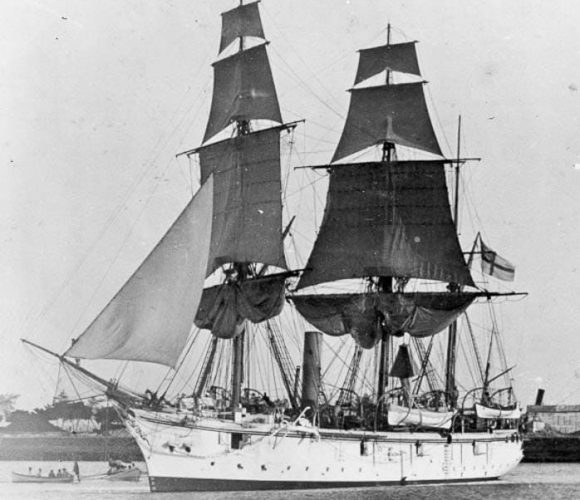Sloop
A question frequently asked by visitors to our exhibitions and events.
The term ‘sloop’ referred a small sailing craft originating in the old sailing navy about the time of the Crimean war. As the century progressed, they increased in size and in the latter part of the 19th century, had both sail and steam propulsion. On long passages, reliance was on sail and steam was only raised when there was no wind and arrival time was important. The sail configuration of either a barque or barquentine became known as ‘gunboat rig’.
These ships were the Navy’s patrol vessels of the Empire, delivering the ‘gunboat diplomacy’ of the 19th century.

HMS GANNET, (left), the last known example, is now preserved in Chatham Historic Dockyard.
The quest for a multipurpose vessel saw the term ‘sloop’ return with the Flower Class Minesweeping Sloops as the First World War ended. CHRYSANTHEMUM and PRESIDENT (formerly SAXIFRAGE )were both berthed close to WELLINGTON until recent years.
They were intended to act as escorts to merchant ships after use of convoys had shown its benefits in the First World War.
In addition, they provided wire sweeping against buoyant mines, the only known mine type at that time. By 1924, the design for new sloops was established to suit service patrolling the Empire with low and high angle guns, searchlight, rangefinder and minesweeping gear – surely a versatile warship?
HMS WELLINGTON was completed in 1934, yet by 1932 there was a realisation that the Second World War would be different. The sloops needed anti-submarine weapons. Subsequent sloops were fitted with depth charges. Existing sloops were updated. The term sloop was dropped by The Admiralty during the Second World War.
by Dr. Terry Lilley (Cdr. RNR)

